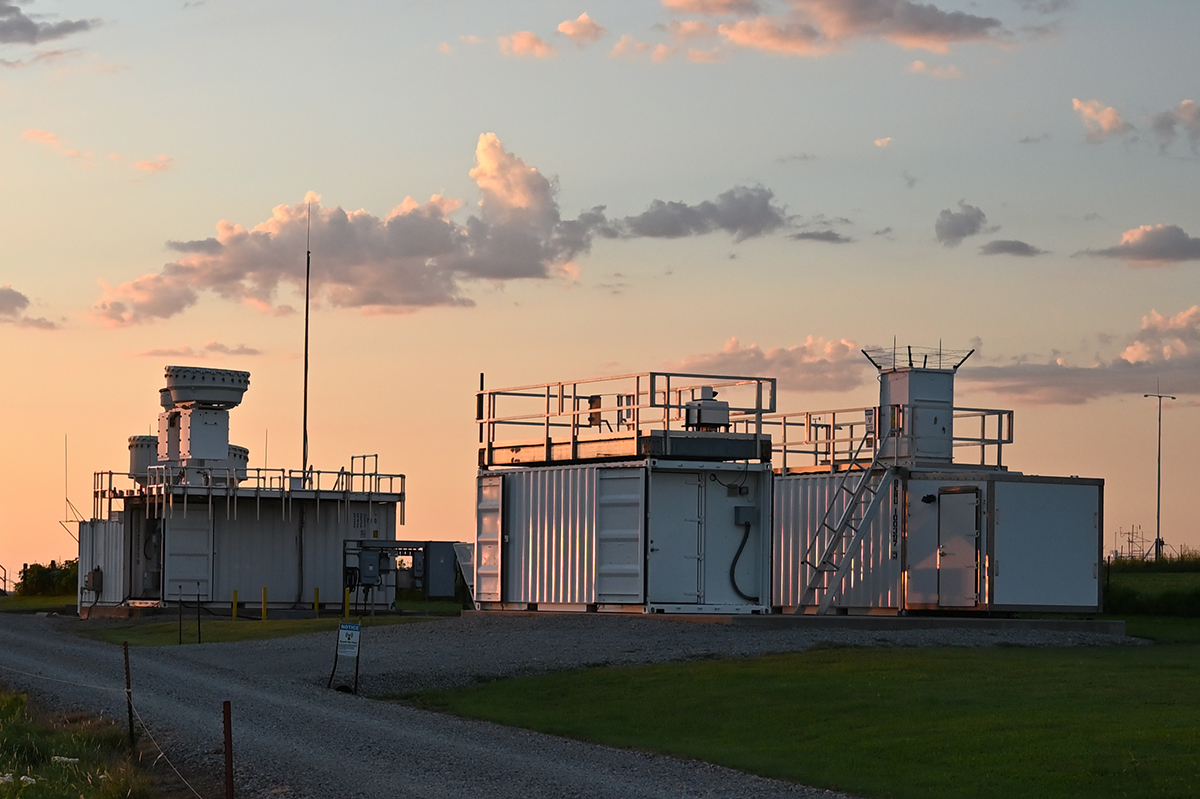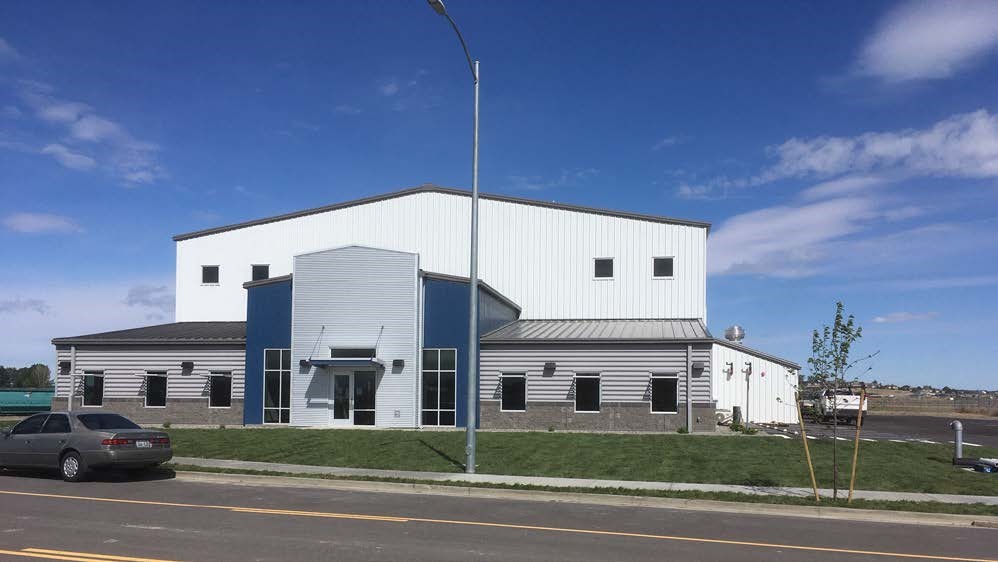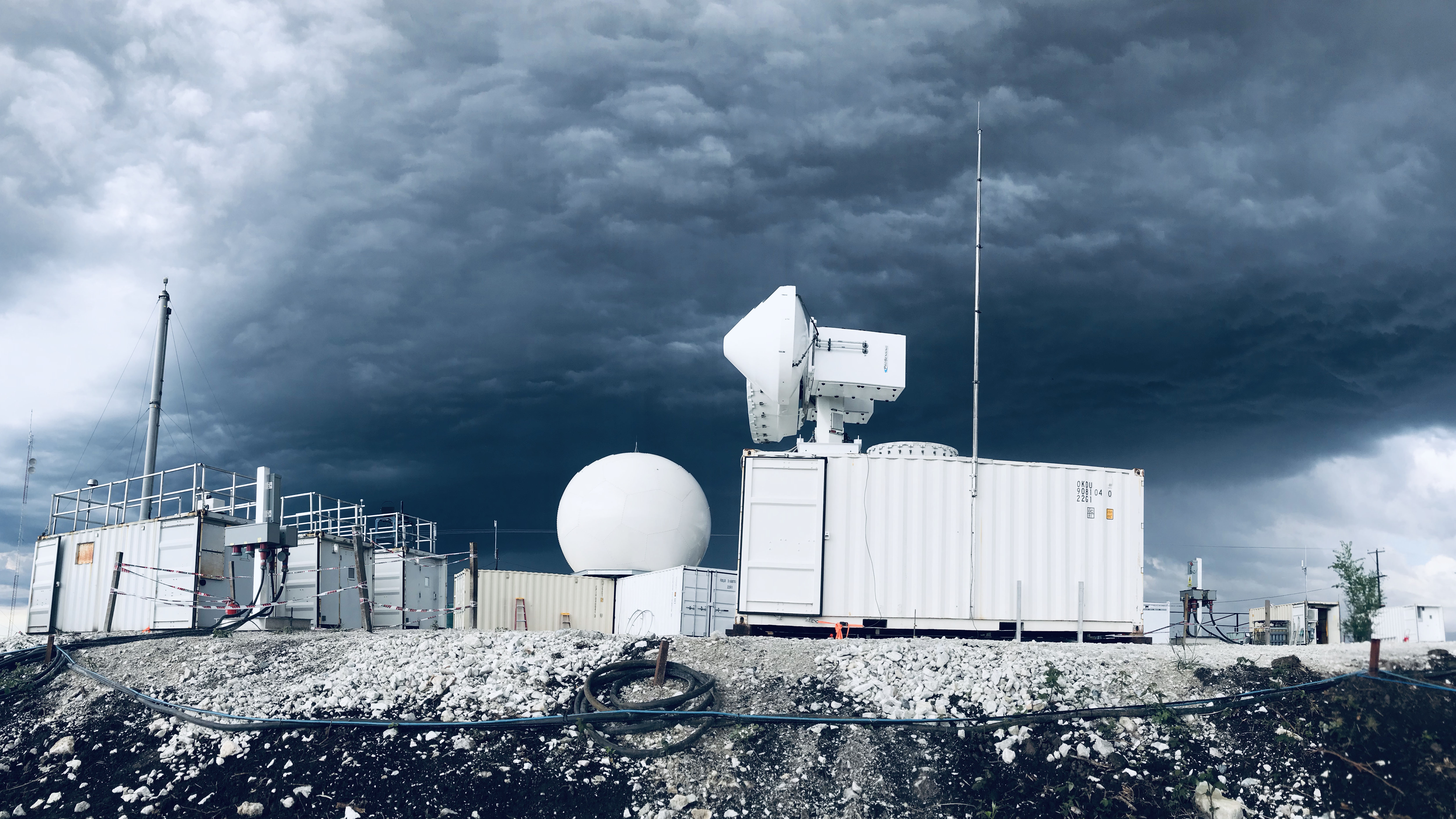Development Achievements Keep ARM Moving Forward
Published: 19 January 2021
Users reap benefits of activities associated with instruments, facilities, and data

The Atmospheric Radiation Measurement (ARM) user facility prioritizes development activities with an eye on present and future user needs. Decisions to acquire or decommission instruments, upgrade facilities, and proceed with new science products all happen with the user in mind.
The Engineering and Process Management group leads the coordination of new development tasks in ARM, working with facility managers, instrument mentors, data translators, software and tools developers, and site operations staff.
In fiscal year 2020 (FY2020), ARM devoted many resources to supporting the Multidisciplinary Drifting Observatory for the Study of Arctic Climate (MOSAiC) expedition and the Cold-Air Outbreaks in the Marine Boundary Layer Experiment (COMBLE).
As MOSAiC rolled on in the central Arctic and COMBLE in northern Norway, ARM worked to secure new instruments for future deployments. Users also got a slew of new science products and a revamped data portal for accessing them.
Instruments
In FY2020, ARM continued to add or replace instruments across its observatories while addressing future instrument needs.
ARM ordered two more 3-channel microwave radiometers (MWR3Cs), which will go to the Southern Great Plains (SGP) and North Slope of Alaska (NSA) atmospheric observatories. In FY2019, new MWR3Cs shipped out with the first and second ARM Mobile Facilities (AMF1 and AMF2) for COMBLE and MOSAiC, respectively.
One new Cimel sunphotometer ordered in FY2020 went to the Eastern North Atlantic (ENA) atmospheric observatory, and a second will be deployed for the upcoming TRacking Aerosol Convection interactions ExpeRiment (TRACER) in Texas.
Two more Cimels capable of detecting lunar light will be purchased in FY2021. Those Cimels are among several new instruments slated to deploy with AMF2 for the 2021–2023 Surface Atmosphere Integrated Field Laboratory (SAIL) field campaign in Colorado. Additional new instruments include a scanning mobility particle sizer and a 915-megahertz (MHz) radar wind profiler (RWP).

The RWP was needed because TRACER, an AMF1 campaign scheduled to run at the same time as SAIL, will also use a 915 MHz RWP.
“A certain frequency (1290 MHz) is required outside of the U.S., and another frequency (915 MHz) is required inside of the U.S.,” says ARM Engineering and Process Manager Jennifer Comstock, who is also responsible for ARM science products. “And normally we have one outside the U.S. and one inside the U.S. at any time, so we can swap them from which AMF needs them, but we have TRACER and SAIL in the U.S. this time.”
In FY2020, ARM also performed—and prepared for—some instrument shifting from one site to another.
After upgrading a high-spectral-resolution lidar previously at the NSA, ARM is testing it at the SGP by running it with the Raman lidar. In a follow-on to a 2015 study at the SGP, ARM combined the lidars so it could test multiwavelength aerosol retrievals to provide vertical profiles of aerosol properties.
The high-spectral-resolution lidar’s ultimate destination has yet to be determined, says Comstock. ARM, however, intends to install two new atmospheric emitted radiance interferometers at the SGP.
In preparation for taking aging Doppler lidars out of service for maintenance, ARM acquired a new one that could be moved in and out of locations to avoid “a big data gap,” says Comstock.
The new Doppler lidar has an extended range to roughly 10 kilometers and improved sensitivity.
ARM Facilities

Another FY2020 priority was improving ARM facilities.
The ARM Aerial Facility (AAF) got a new hangar to house its Bombardier Challenger 850 jet, which is being modified to accommodate scientific missions.
The hangar has office space for staff and visiting scientists plus room to perform aircraft and instrument maintenance.
In March 2020, ARM hosted an aerial instrumentation workshop to help evaluate appropriate capabilities for the new aircraft that satisfy the needs of the research community.
ARM also replaced two aging containers for AMF1, which in FY2020 marked the 15th anniversary of its field campaign debut in Northern California.
ARM Data Center
With an international research community ready to pounce on new arctic data, the ARM Data Center deftly handled MOSAiC and COMBLE data, even as large batches came in on hard drives.
Amid that work, the ARM Data Center officially moved to a new version of Data Discovery, where users can search for and order ARM data.
Not too long before the launch, ARM surpassed 2 petabytes of data in its nearly 30-year-old archive.
“In the past, users experienced a bit of a challenge finding the data that better suit their needs, especially with our vast collection of data,” said Giri Prakash, manager of ARM’s data services, when the new Data Discovery officially launched in late May 2020.
With feedback from users and stakeholders at the heart of its development, the new Data Discovery is designed to make it easier to find and order the right data. Additional capabilities are coming.
Another sizable FY2020 project focused on preparing existing value-added products (VAPs) and data ingests to run on a new version of RedHat, a Linux operating system installed on the ARM Data Center’s servers. This work included updating VAP codes to work on the new RedHat7.
For instrument mentors and site operations staff, the ARM Data Center implemented a new system in which preventive and corrective instrument maintenance could be reported in one spot.
The metadata team also participated in an effort across ARM to improve the discoverability of AAF data. The effort involved AAF personnel, ARM instrument mentors, communications and website development staff, and Comstock.
A New Group of Science Products

In FY2020, ARM released b1-level products for aerosol size distribution, aerosol chemical composition, trace gas, and radar data.
ARM b1-level products undergo calibration, correction, and quality control processes beyond ARM’s standard quality checks and corrections. Oftentimes, b-level products are then further developed into c1-level VAPs.
The new b1-level aerosol size distribution and trace gas products emerged from efforts to harmonize—or standardize—data. For instance, in the case of aerosol size distribution, the b-level processing of data from four instruments will allow the data to be merged into a single size distribution. The four instruments are the ultra-high-sensitivity aerosol spectrometer, aerodynamic particle sizer, and regular and nanoparticle versions of the scanning mobility particle sizer.
The b1-level radar products came from the 2018–2019 Cloud, Aerosol, and Complex Terrain Interactions (CACTI) field campaign in Argentina. These highly characterized CACTI data—collectively known as a data epoch—can lessen uncertainty in retrievals such as particle phase or size distribution.
ARM is in the midst of releasing cloud and precipitation radar VAPs from CACTI. Available now are the Ka-Band ARM Zenith Radar Active Remote Sensing of CLouds (KAZRARSCL) VAP and two new products that provide gridded moments from scanning ARM cloud radars.
CACTI data from the Corrected Moments in Antenna Coordinates Version 2 (CMAC2) VAP are coming soon. CMAC2 corrects raw ARM precipitation radar data and retrieves precipitation quantities from the radar measurements.
Science Product Updates

Deep convection during CACTI is the next scenario of focus for the Large-Eddy Simulation (LES) ARM Symbiotic Simulation and Observation (LASSO) activity, which combines high-resolution modeling and ARM observations.
In FY2020, the LASSO team released a fifth season of data bundles from the SGP shallow convection scenario (now on hiatus). In doing so, the team made available the high-frequency data used to generate skill scores in the bundles and inform the LES simulations.
ARM released its first three-dimensional large-scale forcing data product, VARANAL3D—an extension of the one-dimensional VARANAL. Both products use a constrained variational analysis approach. So far, VARANAL3D data are available from two past SGP campaigns.
ARM also continued to roll out its best-estimate (ARMBE) data sets for atmospheric measurements and cloud and radiation quantities. In FY2020, the ARMBE team announced data from the ENA observatory and mobile facility campaigns in Brazil, Niger, and Antarctica. More ARMBE data are on the way.
To stay up to date on new data releases, bookmark the Data Announcements page on ARM.gov.
You can also check back periodically on the ARM Priorities page to view progress on science products and engineering tasks across the facility.
Keep up with the Atmospheric Observer
Updates on ARM news, events, and opportunities delivered to your inbox
ARM User Profile
ARM welcomes users from all institutions and nations. A free ARM user account is needed to access ARM data.


















